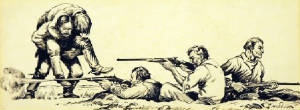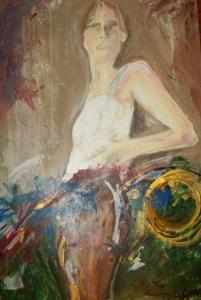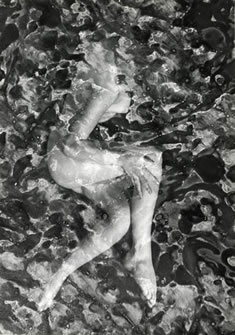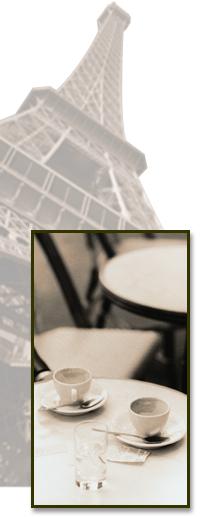|
A Running Fight: The Red River War in Art
Panhandle-Plains History Museum
October
3, 2009 through February 14, 2009

|
| Press Release Art - Photo |
Depictions of the dramatic and critical “Battle at Little Big Horn” are prolific. However,
without such a dramatic and pivotal battle, artists’ paintings of the U.S. Army on the Southern Plains are less well
known. A Running Fight: The Red River War in Art, at the Panhandle-Plains Historical Museum October 3, 2009, through February 14, 2010, shows the U. S. Army’s campaigns against American Indians
on the Southern Plains through paintings, drawings and chromolithographs.
The critical battle of the Red River War began as the sun rose on September 28, 1874, when Colonel
Ranald S. Mackenzie, in command of the Fourth Cavalry, charged into Palo Duro Canyon. At least five Indian villages had sought
protection in the hidden isolation of Palo Duro Canyon.
This exhibition will be the first of its kind to focus on this particular aspect of the American
West, assembling depictions of the events leading up to this particular campaign. Artists drawn to the Red River War are those
of national repute such as Frederic Remington, Nick Eggenhofer, W. Herbert Dunton and Edward Borein, as well as Texas artists
such as H. D. Bugbee, Ben Carlton Mead and John Eliot Jenkins.
WINNIPEG — An exhibition at the Winnipeg Art Gallery will highlight the "remarkable impact" of contemporary
Cuban art, the gallery says.
Work by 40 Cuban-born artists, about half of whom still live on the island, is featured in the touring exhibition,
which includes paintings, drawings, prints, photographs, sculptures and installations.
"The First Havana Biennial of 1984 firmly established Cuba as a regional and world centre for contemporary
art, and this exhibition dramatizes the extraordinary production and innovation of its artists since then," said curator Kerry
Oliver-Smith of the Harn Museum of Art at the University of Florida.
Several internationally renowned artists are represented in the show, including Jose Bedia, Antonio Fernandez,
Los Carpinteros, Carlos Garaicoa, Alexis Leyva and Elsa Mora, said a press release.
"Cuba Avant-Garde: Contemporary Cuban Art from the Farber Collection" runs from Oct. 22 to Jan. 10. It was
organized by the Harn museum and premiered there in 2007.
Mona Brooklyn, New York
John of New York City
John of Seattle
|
Chad

|
|
| |
|
|
Fragile Balance New Show At Art Gallery La Place
|
|

ART GALLERY LA PLACE
ON THE SQUARE in Washington:
The Art Gallery La Place announces a new show, “Fragile
Balance” opening on Thursday, April 2, 2009 with a “Meet the artists” reception from 6:00-8:00 pm at the
gallery. We will be introducing you to new artists, Georgene Wright of Augusta and Bob Hart of Athens. Wright is a talented
painter who works in watercolor, oils and acrylic, she belongs to an artists cooiperative on Artists Row in Augusta.. Hart
is one of Athens’ premier self taught artists, he works in acrylic. One of his works was selected for the new “Art
in the Air” series on billboards around Athens promoting local art. His series is a fascinating study on families and
traditional values. There will be new work by our gallery artists Laura Connely, Cathy McIntire, Will Eskridge, Bob Connely,
Peter Muzyka and David Siffert.
We’ve timed the opening to help celebrate the Spring Tour of Homes in Washington.
It will be interesting to see what the artists present as “Fragile Balance” … old houses, their state of
mind or perhaps the environment, but whatever their perception, with our talented array of artists - it will be interesting!
There is a wonderful new range of Tierney Rollins’ signature series of pottery to round out a wonderful show.
Do
be sure to stop by, meet the artists and collect some affordable, original local art - they are very special. The show runs
through the end of May.
http://artgallerylaplace.com (706) 678-6258
|
|
T-F 10:30
|
|
|
The White Space Gallery presents Emil Cadoo - I Regret Nothing
Anya Stonelake / White Space Gallery are to present the UK’s first exhibition of works by photographer
Emil Cadoo, focusing on his seminal period of the 1960s-70s, on March 27 until May 6.
Born in Brooklyn, New York, Emil Cadoo (1926 – 2002) was one of the defining photographers of the 1960s.
In May 1960 he emigrated to Paris, not only to escape the racism of America at that time, but also finding that (as a homosexual)
the city offered far more freedom both to live and work. Except for an extended trip back to New York in 1965, he remained
in Paris for the rest of his life, working both independently as an artist-photographer, and also for publications such as
Life, the French Vogue and more.

A defining characteristic of Cadoo’s work was his harnessing of the multiple exposure - often combining
images of statues, the human or botanical form with more abstract images of varying textures - to give a sense of displaced
layering, both intellectually and emotionally. To make such works he would frequently walk together with the person to be
portrayed until they found a wall or surface whose texture he felt was expressive of what he wanted to say, seeing always
a definite meaning, mood or attitude in the textures against which he depicted his subjects. Cadoo often spoke of his aim
to express the most ‘inner fiber’ of the person he was depicting, though many see his use of the double exposure
- especially when linked to series such as the 1964 Children of Harlem - as a metaphor and embodiment of Cadoo’s sense
of personal displacement in respect to his racial and sexual identity. It was also this characteristic, particularly in his
erotic works, that brought him to become somewhat of a ‘cause-célèbre’ in the USA in the 1960s in the fight against
artistic censorship, inextricably binding him to the social developments in America at that time, despite his foreign residency.
In April 1964, all 21,000 copies of the April/May issue no.32 of the American magazine Evergreen Review -
containing (among others) texts by Norman Mailer, Jean Genet, William Burroughs, Bryon Gysin, Michael McClure, Karl Shapiro
(a who’s who of the day’s practitioners of perceived outrage), and an erotic photo-essay by Cadoo - was seized
by the police whilst it was still being bound. The edition had been deemed ‘obscene’ by the county’s district
Attorney, whose particular disapproval was leveled at Cadoo. It took the special intermission of Edward Steichen, who compared
the images to the work of Auguste Rodin “the greatest living sculptor of our time”, to obtain the condemnation
of three judges of this action as ‘unconstitutional’, and to return the magazine to the public domain.
Throughout the 1960s and later, Cadoo produced whole series of photo-essays on leading black cultural figures
and friends including Duke Ellington, Ray Charles and the writer James Baldwin (whom he portrayed almost as frequently as
he did himself), but also including the French singer Edith Piaf, whom he captured in one of her last performances at The
Olympia. Interestingly, his sources and inspiration for pose and expression were frequently closer to traditional sources
found in western art than the contemporary fashion for commercialism and Pop Art; at times, his source was the art itself,
such as in the series Reverie or Statue, where Cadoo took the idealised classical heads found in public sculpture and cemeteries
as his subject. Incorporating into these faces the double or superimposed leaves, watery striations, wood, grain or wash effects
evoking a sense of introspective and memorialised dignity.
Throughout his work, one sees in Cadoo’s images an interest in the human over the political, the personal
over the documentary, and the classical rather than the contemporary as an overriding background source. Whether as a result
of his personal circumstances or not, the human body is consistently the site of his focus and means of communication. As
Cadoo himself said, “Only when an artist in any field touches universals can it last through time, can it survive the
destruction of things”.
Information: http://www.whitespacegallery.co.uk
Location: Anya Stonelake/White Space Gallery, No. 13 Mason’s
Yard, St James’s, London SW1Y 6BU. Open Tuesday to Saturday, 11am to 6pm (Monday by appointment only).
|
|
M-W 11:30
|
|




